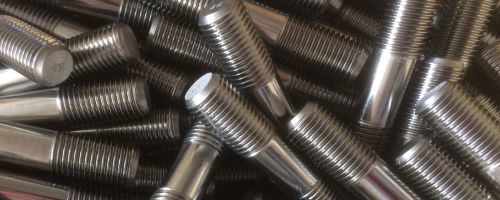Stainless Steel Fastener
Stainless steel is, without a doubt, the go-to material for fasteners everywhere. Stainless steel is a special and long-lasting material because of its many advantages. Stainless steel is the traditional name for this type of corrosion-resistant steel alloy, however the electrical and mechanical characteristics of the alloy's tiny variation component can range widely. Stainless steel is an alloy made of many various metals, including chromium, nickel, copper, tungsten, and molybdenum. You may learn a lot about the variables that bring long-term value to your clients by analyzing the benefits of using Stainless Steel Fasteners.
Although much has been published about correct fastener usage, we provide such a simple guide to help you steer clear of the most prevalent pitfalls.
Stainless Steel is Rust - Resistant
The greatest selling feature of stainless steel is its resistance to corrosion. Chrome oxide forms on the surface of stainless steel because its chromium content is slightly more than 10%. It protects against rust and deterioration caused by oxidation and other chemical processes associated with rust. The most often identified element for the development of fasteners is hydrogen, and stainless steel is resistant to its recruitment from both the interior and outside.
Self-repairing Stainless Steel Fasteners
The outermost layer of the fastener, made of thin chromium oxide, employs oxidation to defend itself from film oxidation. That demonstrates how brilliant you are, right? The oxide layer not only protects the fastener against rust, it also facilitates the fastener's ability to self-repair in the event of damage. Oxygen is exposed to the bare alloy at a damaged location if a scrap, dent, or other physical problem damages the fastener. Another layer of chromium oxide, protecting against future rust, forms as a result of oxidation at this open layer.
Be aware that while stainless steel is resistant to corrosion, it is not rust proof. The fasteners are significantly inferior to Stainless Steel Fasteners if they are not put properly, if the contact with the oxygen is insufficient (which prevents the chromium oxide layer), or if the fastener is released on the components.
Stainless Steel Fasteners are long lasting
Stainless Steel Fasteners may be utilised in a wide range of environments, including high heat and underwater. There is no other substance that can provide such long-term advantages without requiring you to mortgage your future. Stainless Steel Fasteners may be more expensive up front, but they save money in the long run. You'll end up saving a lot more money because Stainless Steel Fasteners only need to be changed every few decades.
The aesthetic value of Stainless-Steel Fasteners is undeniable
Stainless steel unquestionably improves the aesthetic value of any building. Builders, manufacturers, and automakers have all been inspired to utilise fasteners to advertise their products because of their rugged yet endearing appearance. For aesthetic reasons, components produced with Stainless Steel Fasteners tend to look better than those built with other materials because of their resistance to cording.
In addition to its many other virtues, the practicality of Stainless Steel Fasteners is perhaps their greatest aesthetic asset. DC Engineering is widely distributed and readily available.



Comments
Post a Comment